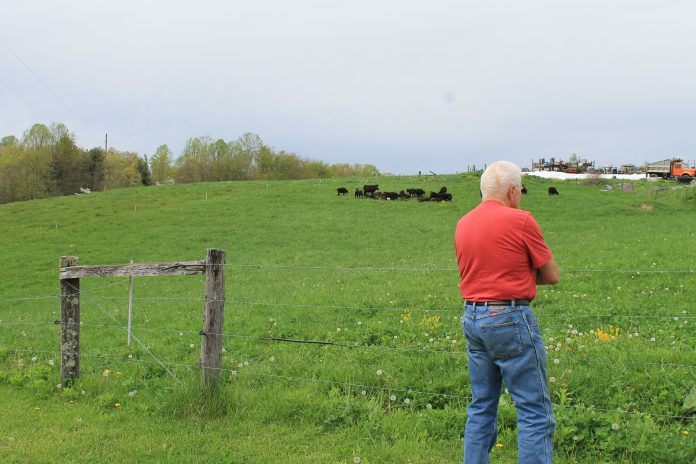SALEM, Ohio — To bring in the new year, we look at trends and technology to watch in 2018. But what about things to stop doing? Here are some tips on practices or habits to kick to the curb this year.
1. Procrastination
It has been another year of tight margins for dairies and crop farms alike, said David Marrison, Ashtabula County OSU Extension educator, and by all indications, we are forecasting tight margins in the coming year.
Attention to detail is crucial. Keeping animal health, financial, seed, crop rotation records — records of just about every element of your farm — will help, he said. Don’t wait to document rates of gain, the nitrogen levels in the pasture or anything else.
“Make a habit of pushing the pencil to the paper going into the new year.”
2. A sole focus on marketing
Many farmers focus on marketing grain. They won’t sell beans at $9.95, they sit and wait on $10, said Marrison.
But there are other ways to make up that 5 cents a bushel. Focusing on production costs could you make you that 5 cents a bushel and more.
Selecting the right seed can save money (know what traits are included, and if you need them). The same goes for fertilizer selection.
Soil test, forage test, take time to do the testing, Marrison said. Doing these simple tests allows farmers to know where they stand and exactly what to add.
Another advantage is that you will know how much fertilizer you will need and may be able to book a good price during the off-season.
“During this low margin time, we need to focus on inputs and smart selection.”
3. One-man-show mentality
With new tax laws, increasing financial stress and mental health pressures on the rise farmers and farm workers need to seek help.
“I’d recommend they attend a workshop or school about how the new tax laws are gong to impact them personally and their operation,” Marrison said. Both Penn State and Ohio State host such workshops.
Don’t avoid your financial statements. Get together with your spouse or others involved in the farm and talk about it. Go to your financial lender; many times they can move debt from short term to long term or make other tweaks to get you by, he said.
“Instead of hiding, sit down with family and professionals and discuss things during this low margin time,” Marrison said. “Don’t do business as usual.”
4. Ignoring fixed costs
Having accurate, detailed farm records will help you make objective, data-driven decisions about fixed-cost adjustments.
“Look for ways to reduce your machinery line,” said Tanner Ehmke. Knowledge Exchange manager at Cobank. “Stop buying machinery if yours is efficient; start buying if it’s not.”
This is an ideal time for farmers to analyze equipment utilization. Ask yourself: What equipment do I need to have? What is nice to have? What am I not fully utilizing?
“In fixed cost, farms have a hard time knowing what machinery actually is costing them,” Marrison said. “Many may have inefficient equipment, or, on the other side, too much equipment for the number of acres they farm.”
Ehmke and Marrison agree that sharing machinery with neighbors, or doing some jobs on the side like excavating will help the bottom line this year.
“We’ve got to explore ways to cut back in this downturn,” Ehmke said. “It is a constant, we always need to be mindful of costs.”
5. Farm practice shaming
Today, there are 7 billion of us on the Earth. It was estimated that there would be 9 billion people on Earth in 2050. Recently, that original estimate for 2050 increased and is now expected to surpass 9.5 billion by 2050, according to Jeff Simmons, Elanco Animal Health president.
The Food and Agriculture Organization of the United Nations predicts an estimated 60 percent increase in demand for animal-sourced foods, such as meat, milk and eggs.
“Organic agriculture represents only 4 percent of the U.S. market and 5.4 percent of the European Union’s, and isn’t in the position to feed the number of neighbors we’ll have in 2050,” says Simmons in a letter on Enoughmovement.com.
There is room in the market place for all types of agriculture — organic, conventional and the unending list of niche markets. We must keep actively pursuing all options to make sure the world is fed.
Related stories
5 things to leave behind in 2017
5 precision agriculture technologies to watch in 2018
5 tips for a better farm marketing plan
5 things on farm bill wish list
5 ways to kick 2018 into gear
5 pasture improvements to begin in January
5 guidelines for winter manure application
5 don’ts for a happy new year












